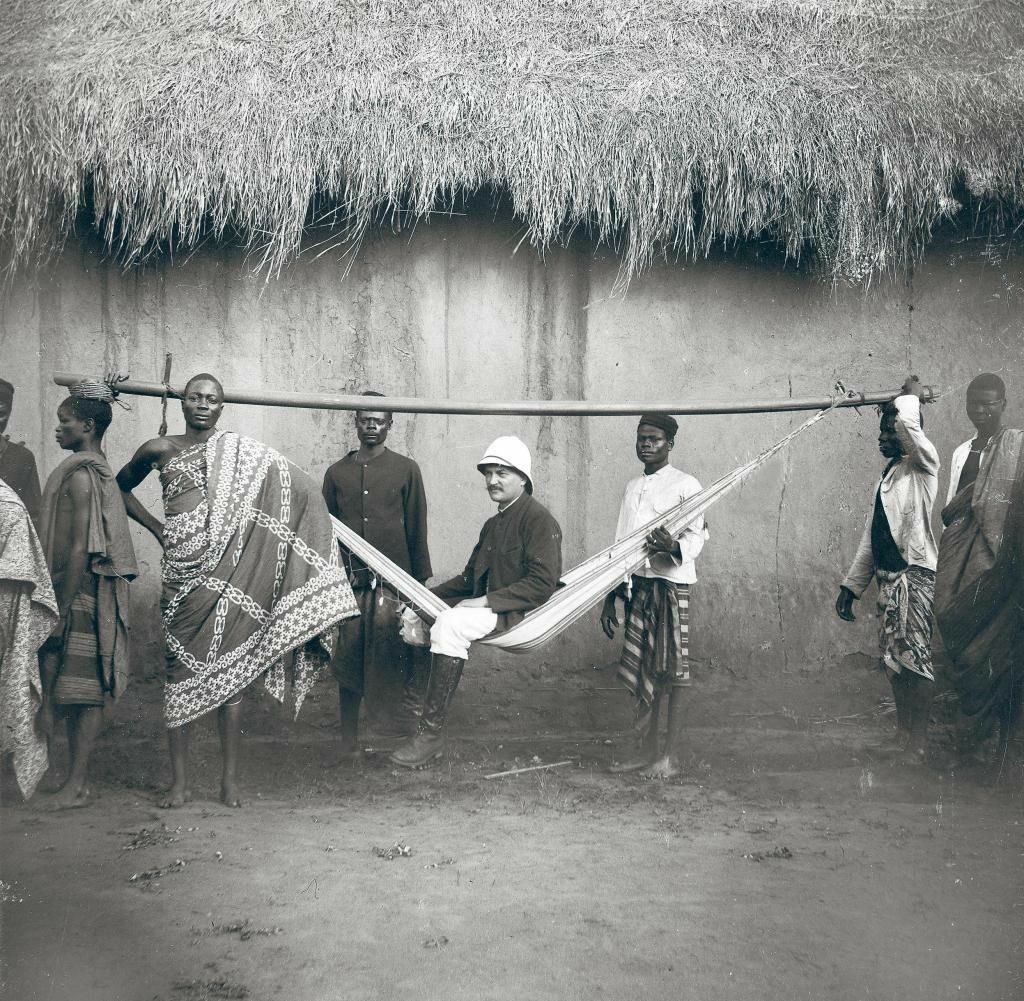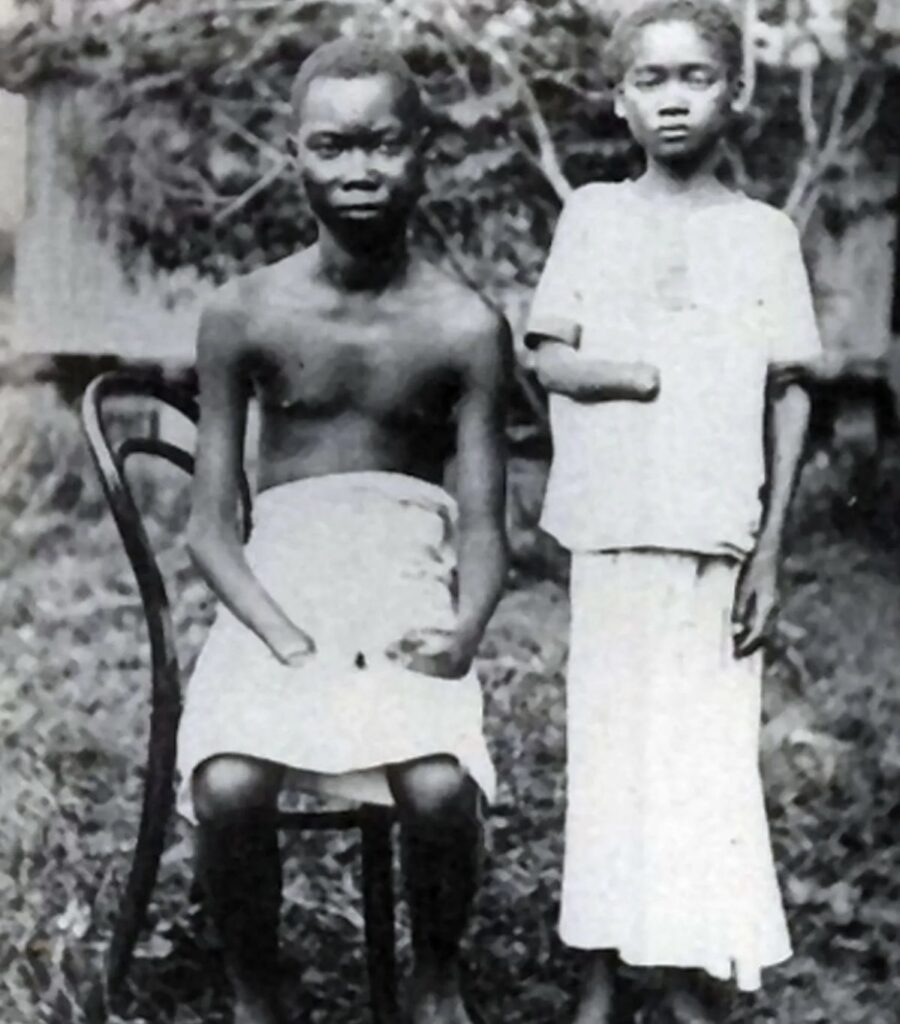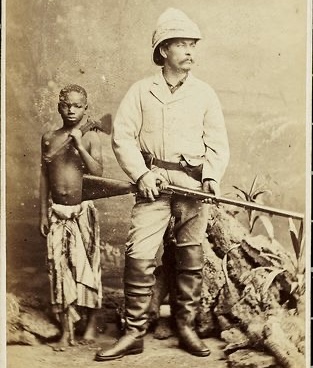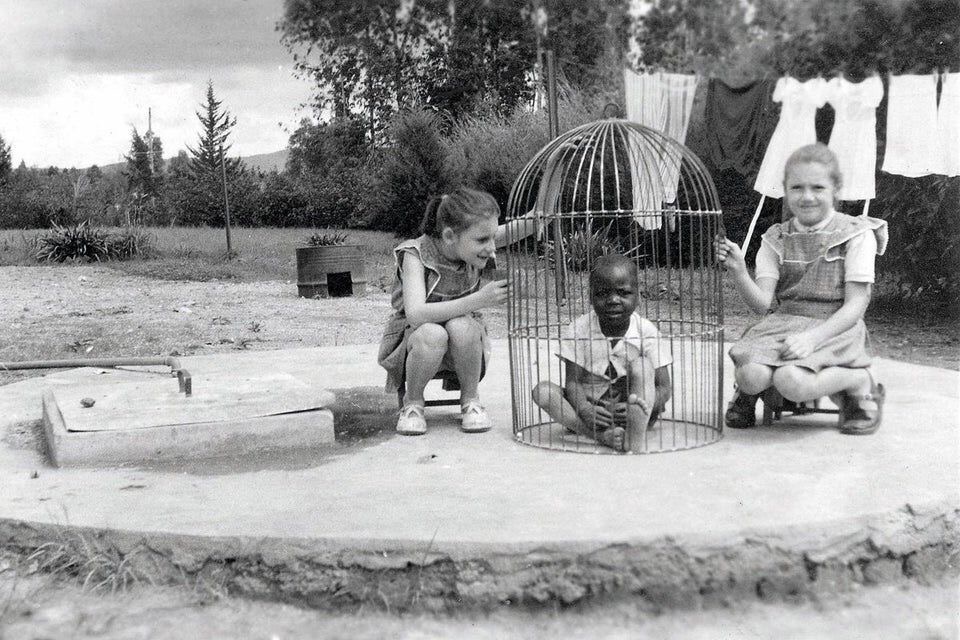Once upon a time, there was a king who never stepped foot in the land he ruled, but made it bleed for him anyway.
He didn’t wear a crown in the jungle, he didn’t swing a sword or shout orders from a throne. No, he didn’t. His weapon was simple.
He used paperwork, smooth speeches, and a shiny lie he sold to the world. “I’ve come to civilize Africa.”
Those were his words, but behind the polished words and fake promises, King Leopold II of Belgium was building something far darker.
He was building a secret empire that was built on rubber and soaked in human suffering. While other European powers fought for colonies, King Leopold played a clever trick. He didn’t just colonize the Congo, he owned it. It was like someone buying a giant piece of land and saying, “This is mine now.”
And what did he do with it?
That is the part history has tried to erase.
This is the story of how a royal PR stunt became one of the deadliest cover-ups in history. It is a tale of stolen lives, severed hands, and a King who got rich while pretending to be a hero.
Are you ready for the truth behind the lie?
Let’s begin.
A King With Two Faces
In 1884, European leaders gathered in Berlin to decide who would control which part of Africa, like guests at a dinner party dividing up a giant cake that did not belong to them.
And there stood King Leopold II of Belgium, smiling, polite, and full of fancy words.
Leopold claimed his mission was to bring “civilization” to Central Africa.
He told everyone that he had no interest in power or profit. He said he just wanted to help. Leopold claimed his mission was to bring “civilization” to the people of Central Africa by building schools, spreading Christianity, and generally improving their lives. It sounded noble, so the other countries gave him control of a massive region in central Africa—what would become the Congo Free State.

However, the moment they looked away, Leopold showed his true face. Instead of treating the Congo as a shared humanitarian project, he acted like he had won the lottery. He didn’t rule it as a king but as an owner, as if he had bought the land himself.
The Congo Free State was anything but “free.” Under Leopold’s control, it became a land of terror. People were forced to work, villages were burned, and the punishments meted out were brutal. All of this was hidden under the mask of “civilization.” He fooled the world with one hand and crushed the Congo with the other.
Rubber: Congo’s Painful Gold
In the 1890s, a new craze swept across the world: rubber.
Bicycles were becoming trendy, and cars were starting to gain popularity. All those wheels, tires, and engines needed rubber to run. Suddenly, rubber became the new gold —a stretchy, bouncy gold.
They would cut off the hands of some locals as proof that someone had been punished.
And guess what? The Congo had tons of wild rubber vines growing deep in its rainforests. King Leopold saw an opportunity. A dirty one. He granted massive areas of the Congo to private companies loyal to him, in return for which he received substantial financial benefits.
What was the catch?
Well, you might not be pleased to find out that these companies didn’t hire workers; they were allowed to force the local people to collect rubber.
Men were ordered to go deep into the forest and gather rubber sap from vines. They would often climb trees or walk through dangerous terrain.

Each village had a monthly quota, that is, a set amount of rubber they had to deliver. These quotas were ridiculously high and nearly impossible to meet. If a village did not meet its monthly quota, soldiers would cause chaos.
Sometimes they burn homes, sometimes they take hostages, and other times they kill people. There were even times when they would cut off the hands of some locals as proof that someone had been “punished.“
The acts carried out against the locals were sickening, and they were all done under Leopold’s order or under the rule of the companies he allowed to operate. This wasn’t just a business; it was a rubber-fueled nightmare, and it made King Leopold II one of the richest men in the world… only it was at the cost of millions of African lives.
The Terror Machine at Work
King Leopold did not run the Congo like a normal colony; he ran it like a brutal business, and the enforcers of this business were a group called the Force Publique.
The Force Publique was an army composed of European officers and African soldiers who were compelled to serve under them. However, these soldiers were not protecting the people; they were there to ensure the rubber kept flowing, no matter the cost.
If you think this is dark, then you should get prepared, because it gets even darker.
In order for the locals to meet the rubber quotas, soldiers used pure fear and violence on them. If people did not collect enough rubber from the trees, they were punished, and the punishments were horrifying.
People were whipped or beaten with a brutal whip made of dried animal hide called a chicotte. Women were raped, and men were often killed in front of their families, just to make an example. If you think this is dark, then you should get prepared, because it gets even darker.
Back then, bullets were expensive, and officers did not want soldiers wasting them. So, to prove that the bullet had been used to kill a person and not just fired into the air or used for hunting, soldiers were ordered to bring back a severed hand for every bullet they used.

That’s right… Human hands became receipts. Sometimes they were cut off from the dead, other times, they were chopped off from the living.
In one horrifying case, a group of prisoners were tied up inside a fishing net with heavy stones tied to the ends. Soldiers threw the whole net into a river, drowning everyone inside like they were trash. This wasn’t law and order. It was terror as a system, and it was all to keep the rubber profits rolling in.
Human Cost Beyond Numbers
While Leopold’s agents were busy squeezing rubber out of the forests, they were also squeezing the life out of the Congo.
Men were forced deep into the jungle for days, sometimes weeks, to tap rubber vines. This meant they couldn’t go to their farms, couldn’t fish, and couldn’t provide for their families. If they didn’t collect enough rubber, their wives or children were often taken hostage, or worse, they could be killed.
It was basically genocide carried out under the disguise of “civilizing” a people.
Villages were turned upside down, farms were left abandoned, so people began to starve. Diseases spread easily, especially with so many people, weak, exhausted, or living in hiding. And the worst part is that no one knows exactly how many people died during Leopold’s rule, because no one was really counting.
However, historians estimate that the death toll could have reached 10 million people. This is about half of the population of the Congo at the time.
Think about that for a second!
That is equivalent to wiping out the entire population of a large country today, all so one man in Europe could become wealthy by selling rubber tires, hoses, and bicycle handles.
This wasn’t just about money. It was basically genocide carried out under the disguise of “civilizing” a people. One haunting aspect is that the world was unaware, and even if they had been, they didn’t care, until much later.
Propaganda: The “Civilizing Mission” Cover-Up
Leopold needed to look good, so he invented missionaries, hosted lovely dinners, and painted himself as a hero on the world stage.
However, missionaries began to see the horror firsthand, and they tried to expose the truth. Figures such as E. D. Morel and Roger Casement utilized journalism, letters, and reports to galvanize the world. They formed the Congo Reform Association, and notable writers such as Joseph Conrad, Mark Twain, and Arthur Conan Doyle joined the call.
The land itself bore scars, forests were stripped for rubber, and communities were broken apart. Leopold’s propaganda machine may have slowed, but its echo lasted for generations.
By 1908, the pressure became too much. Protests erupted in Europe and America until the point where governments couldn’t ignore the mounting evidence of atrocities. Finally, Leopold was forced to hand over the Congo, not to its people, but to the Belgian government. It went from being his personal property to an official Belgian colony.
But here’s the thing about propaganda. Once it has been planted, it can live on for decades. In Belgium, the official story is still that Leopold was a great builder, a generous king who gave the Congo “progress.” School children learn about his generosity, not his brutality. Statues of Leopold went up in city squares, celebrating his supposed achievements.
Meanwhile, in the Congo, the memory was different. Families remembered forced labor, lost relatives, and empty villages. The land itself bore scars, forests were stripped for rubber, and communities were broken apart. Leopold’s propaganda machine may have slowed, but its echo lasted for generations.
Legacy, Memory, and Today
The way Congo was under Leopold’s rule was not just a chapter in history; it was one of the largest genocides of the modern era. It is also one of the least acknowledged ones. Historians estimate that millions of people died under his rule, yet for much of the 20th century, this horror barely made it into history books.
He pretended to be kind by inviting nice people in and making stories about helping “uncivilized” people, while hiding the horror.
- The Forgotten Genocide: Many people in Belgium and other places never learned about what really happened. It was easier to remember the king’s buildings and parks than the severed hands and mass graves.

- Human Zoos: Leopold’s supposed civilizing plans for the Congo were carried out through exhibitions, where Congolese people were put on display in Europe. Congolese men, women, and children were displayed like they were animals in the Safari park. A human zoo, where thousands of people visited, including school groups, because, for some reason, observing human beings being treated like animals was deemed “educational.” In reality, Leopold and his army dehumanized Africans and turned race into a spectacle.
- Ongoing Reckoning: Belgium has begun to slowly come to terms with what happened. Statues of Leopold in some parts of the country have been defaced or removed in recent years. In 2022, a Belgian court officially acknowledged that the state had committed crimes against humanity, not just during Leopold’s rule but deep into the colonial period, including the forced removal of mixed-race children from their Congolese mothers.
Leopold II wanted to be remembered as the “Builder King,” and in Belgium, he was for a long time. However, the truth, that is, the one his propaganda tried to conceal, is finally finding its way into the light. His real legacy is not the grand avenues of Brussels. It is the millions of voices he silenced in the Congo, and the unhealed wound of a people who were told that they were being “saved” while they were actually being destroyed.
Simple Words for Heavy Truths
Think of Leopold like a bully who secretly owns a huge playground. He commanded armies, demanded rubber, and punished children, mothers, and fathers for not giving enough.
He pretended to be kind by inviting nice people in and making stories about helping “uncivilized” people, while hiding the horror. It took people who cared a lot to shout the truth to the world.
Leopold II ruled through the exploitation of rubber and human blood. His empire was built on terror, which he disguised as “civilizing.” But in the end, the truth broke out: forced labor, severed hands, starving families, and terrified villagers.
Millions of people suffered in a genocide that nearly vanished from memory. Leopold’s lies, statues, and twisted good intentions may still linger, but so do the stories of the Congo, and so does the search for justice. Remembering that this isn’t about blaming a distant past, it is about ensuring that we never let exploitation hide behind propaganda again.
Shocked right? Well, so were we. Drop a comment, share the story if you believe history like this needs to be heard.

